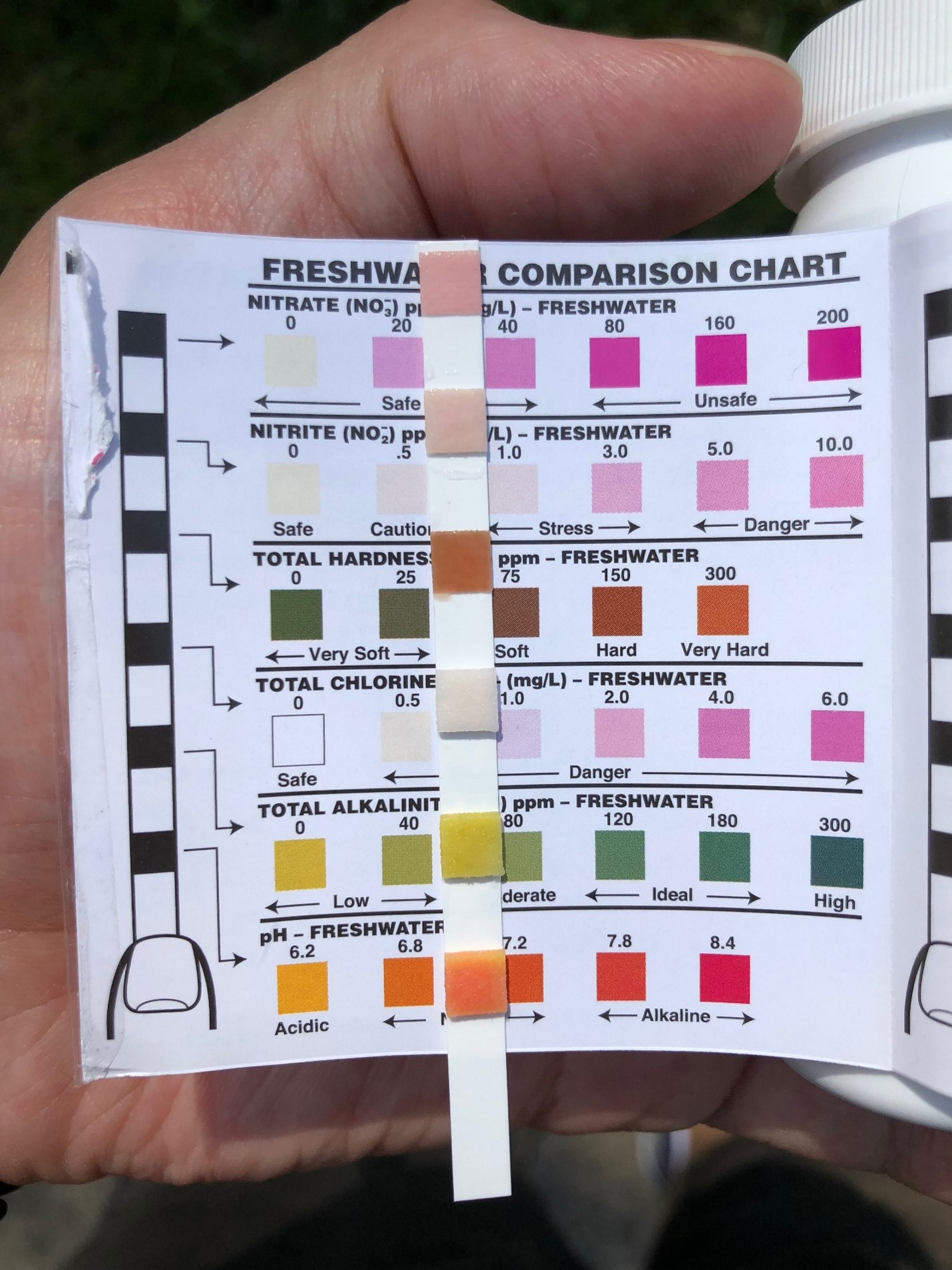Issue 7, July 22, 2022
Effect of Water pH on Pesticides
Resistance is often blamed for the failure of an insecticide or miticide to manage a given pest or pests. However, another possible reason for lack of control may have to do with the pH of the spray solution. pH is a measurement of the concentration of hydrogen ions [H+] in a solution. It is a scale indicating the degree of acidic and basic properties of water. The pH scale ranges from 0 to 14. A pH value below 7 is acidic, whereas a pH value above 7 is basic or alkaline. A pH of 7 is considered neutral.

Though not always accurate, water quality test strips can provide quick and inexpensive measurements, Travis Cleveland, University of Illinois
Many common insecticides and miticides are susceptible to breakdown if the pH of the water is not within an acceptable range. When the pH is greater than 7, a process known as alkaline hydrolysis occurs. Alkaline hydrolysis is a degradation process in which the alkaline water breaks and reduces the effectiveness of the pesticide’s active ingredient. This process releases individual ions (electrically charged atoms), which may then reassemble with other ions. These new combinations may not have any insecticidal or miticidal properties. The rate of alkaline hydrolysis increases as water pH increases.
Insecticides and miticides are more susceptible to alkaline hydrolysis than fungicides and herbicides. Many insecticides and miticides degrade under alkaline conditions. Chemical breakdown of a pesticide is commonly referred in terms of its half-life. A half-life is the period of time it takes for one-half of the amount of pesticide in the water to degrade. Insecticides in the chemical classes organophosphate (acephate, chlorpyrifos, and malathion), carbamate (carbaryl), and pyrethroid (bifenthrin, cyfluthrin, fluvalinate, and lambda-cyhalothrin) are most sensitive to alkaline hydrolysis or “high” pH solutions; however, certain pesticides, such as fenbutatinoxide, are not affected by water pH.
Higher temperatures can increase the rate of insecticide degradation. Alkaline hydrolysis occurs more rapidly when temperatures are high. For example, at a pH of 9 and a water temperature of 77F, acephate (Orthene) loses 50% of its activity in about 5 days.
- The following are ways to avoid water pH problems:
- Follow manufacturer directions regarding the desired water pH. The ideal pH range for most insecticides and miticides is between 5.5 to 6.0.
- Regularly test water pH because the pH of water can change during the season. The fastest way to determine the pH level of water is to test it with a pH meter or test paper. Paper test strips are the least expensive; however, they can be unreliable and vary by as much as 2 pH points. A pH meter will provide the most reliable and consistent readings. Meters are available commercially for $50 to $400.
- Apply insecticides and miticides as soon as possible after mixing. It is advisable to use a spray mixture within 6 hours or less to avoid potential pH problems.
- Don’t leave insecticides or miticides sitting in a spray tank for an extended time. If your sprayer will be left to stand for several hours or overnight before the contents are applied, consider adding a buffering agent to prevent alkaline hydrolysis.
- Adjust water pH with buffers or water-conditioning agents. Buffers or water-conditioning agents are compounds that reduce the damage caused by alkaline hydrolysis and adjust the pH of the spray solution to maintain it within a pH range of 4 to 6.
- In addition, other materials, such as vinegar (acetic acid), are often used to acidify the water.
Additional Resources
https://hyg.ipm.illinois.edu/pastpest/200017b.html
https://bookstore.ksre.ksu.edu/pubs/MF3272.pdf
Author:
Maria Turner